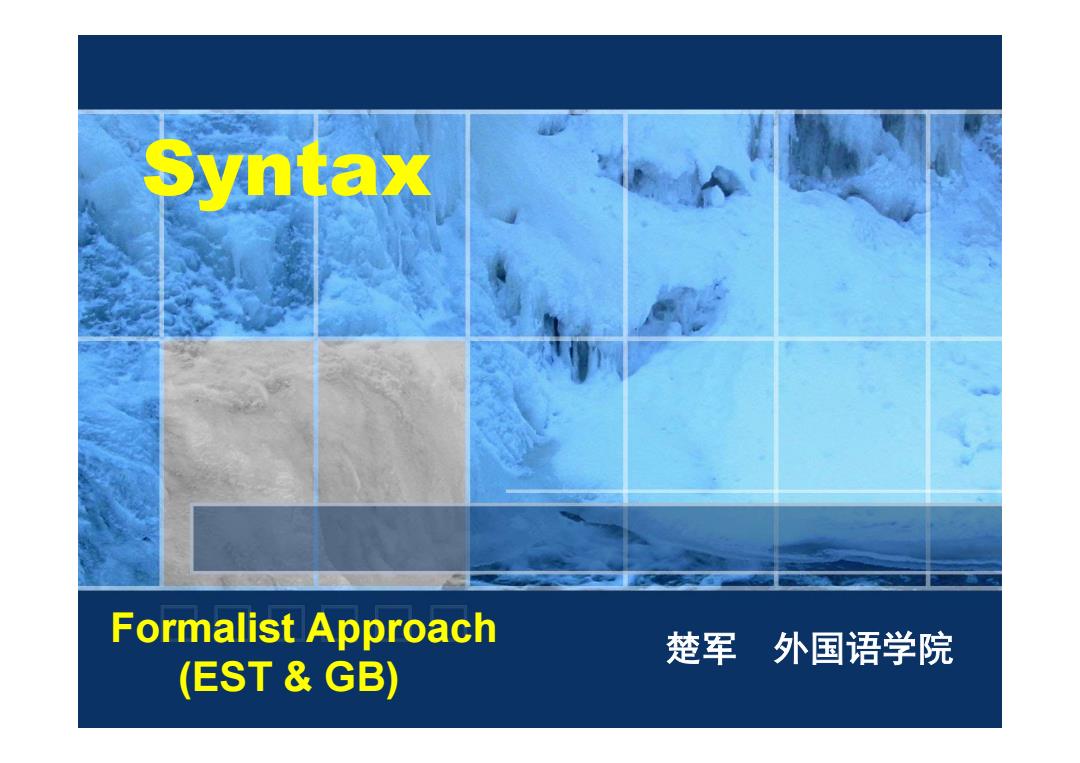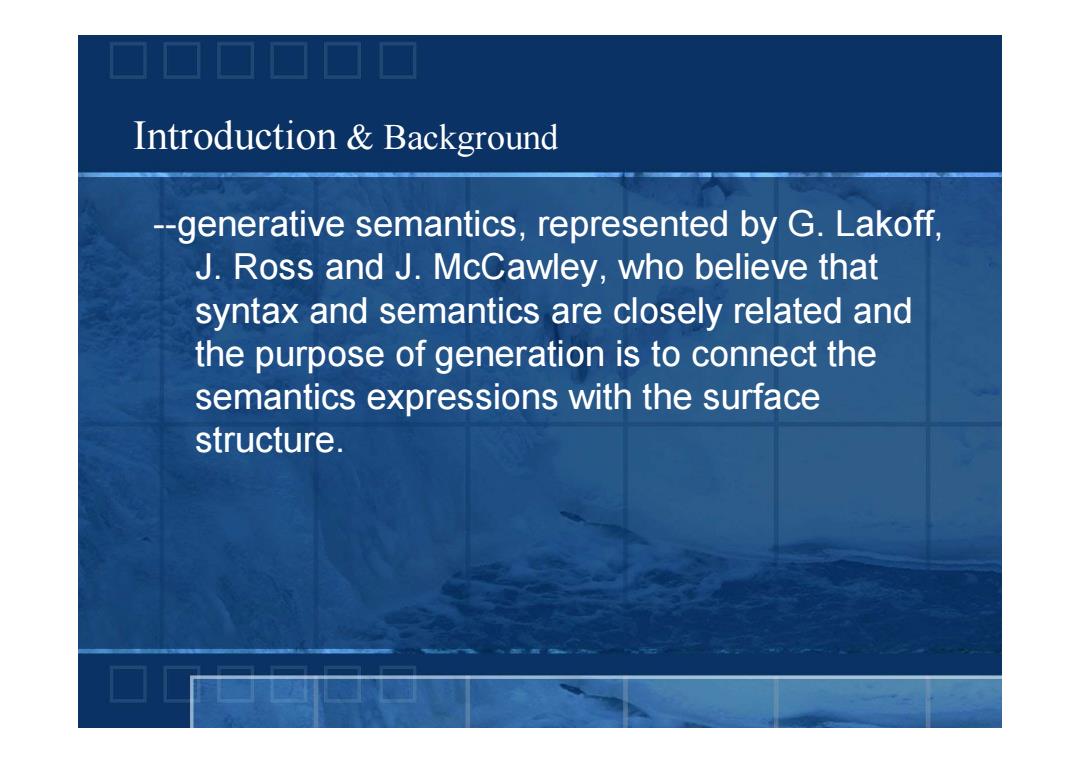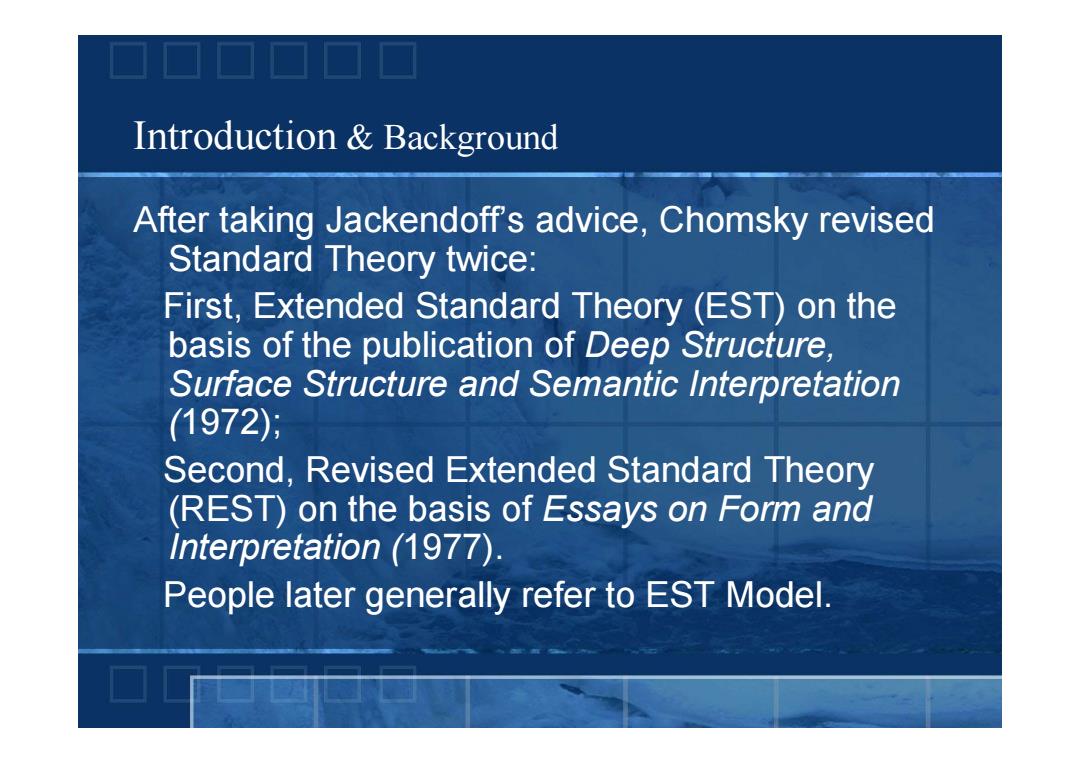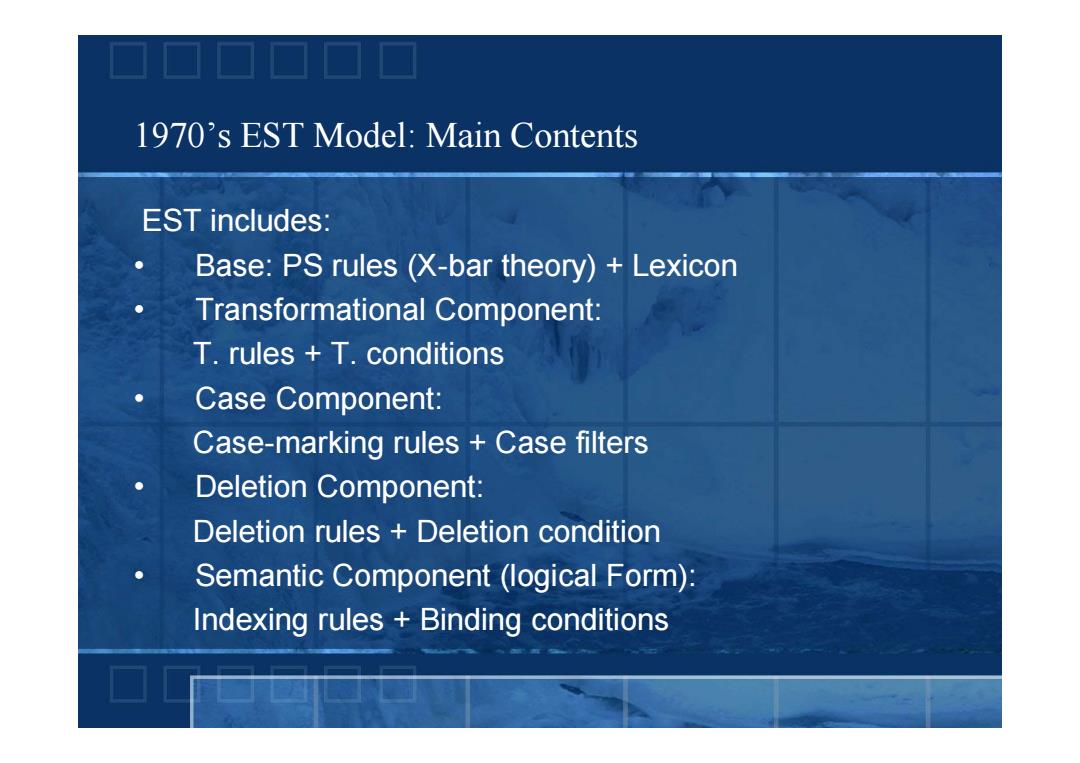
Syntax Formalist Approach 楚军外国语学院 (EST GB)
Formalist Approach (EST & GB) 楚军 外国语学院 Syntax

Introduction Background Criticisms of Chomsky's Standard Theory come from within the TG grammar, and the issue is on the relationship between syntax and semantics. Thus TG grammar divides into: --interpretative semantics,represented by Chomsky,J.Katz,R.Jackendoff,who emphasize that semantics is just for the purpose of interpretation /explanation and syntax and semantics are two separate parts;
Introduction & Background Criticisms of Chomsky’s Standard Theory come from within the TG grammar, and the issue is on the relationship between syntax and semantics. Thus TG grammar divides into: --interpretative semantics, represented by Chomsky, J. Katz, R. Jackendoff, who emphasize that semantics is just for the purpose of interpretation /explanation and syntax and semantics are two separate parts;

Introduction Background generative semantics,represented by G.Lakoff. J.Ross and J.McCawley,who believe that syntax and semantics are closely related and the purpose of generation is to connect the semantics expressions with the surface structure
Introduction & Background --generative semantics, represented by G. Lakoff, J. Ross and J. McCawley, who believe that syntax and semantics are closely related and the purpose of generation is to connect the semantics expressions with the surface structure

Introduction Background After taking Jackendoff's advice,Chomsky revised Standard Theory twice: First,Extended Standard Theory(EST)on the basis of the publication of Deep Structure, Surface Structure and Semantic Interpretation 1972): Second,Revised Extended Standard Theory (REST)on the basis of Essays on Form and Interpretation (1977). People later generally refer to EST Model
Introduction & Background After taking Jackendoff’s advice, Chomsky revised Standard Theory twice: First, Extended Standard Theory (EST) on the basis of the publication of Deep Structure, Surface Structure and Semantic Interpretation (1972); Second, Revised Extended Standard Theory (REST) on the basis of Essays on Form and Interpretation (1977). People later generally refer to EST Model

1970's EST Model:Main Contents EST includes: Base:PS rules (X-bar theory)+Lexicon Transformational Component: T.rules +T.conditions Case Component: Case-marking rules Case filters Deletion Component: Deletion rules Deletion condition Semantic Component (logical Form): Indexing rules Binding conditions
1970’s EST Model: Main Contents EST includes: • Base: PS rules (X-bar theory) + Lexicon • Transformational Component: T. rules + T. conditions • Case Component: Case-marking rules + Case filters • Deletion Component: Deletion rules + Deletion condition • Semantic Component (logical Form): Indexing rules + Binding conditions